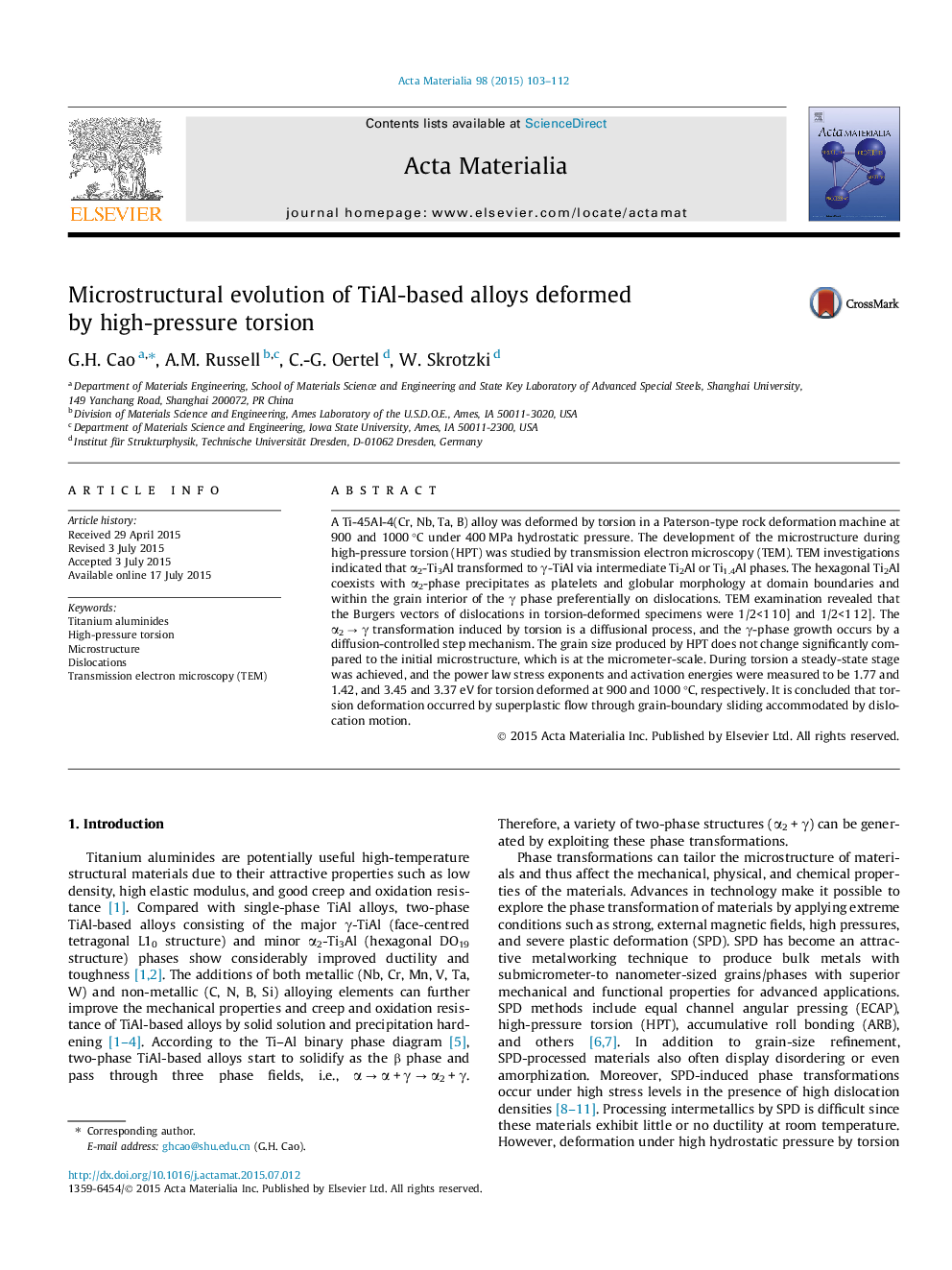| Article ID | Journal | Published Year | Pages | File Type |
|---|---|---|---|---|
| 1445258 | Acta Materialia | 2015 | 10 Pages |
A Ti-45Al-4(Cr, Nb, Ta, B) alloy was deformed by torsion in a Paterson-type rock deformation machine at 900 and 1000 °C under 400 MPa hydrostatic pressure. The development of the microstructure during high-pressure torsion (HPT) was studied by transmission electron microscopy (TEM). TEM investigations indicated that α2-Ti3Al transformed to γ-TiAl via intermediate Ti2Al or Ti1.4Al phases. The hexagonal Ti2Al coexists with α2-phase precipitates as platelets and globular morphology at domain boundaries and within the grain interior of the γ phase preferentially on dislocations. TEM examination revealed that the Burgers vectors of dislocations in torsion-deformed specimens were 1/2<1 1 0] and 1/2<1 1 2]. The α2 → γ transformation induced by torsion is a diffusional process, and the γ-phase growth occurs by a diffusion-controlled step mechanism. The grain size produced by HPT does not change significantly compared to the initial microstructure, which is at the micrometer-scale. During torsion a steady-state stage was achieved, and the power law stress exponents and activation energies were measured to be 1.77 and 1.42, and 3.45 and 3.37 eV for torsion deformed at 900 and 1000 °C, respectively. It is concluded that torsion deformation occurred by superplastic flow through grain-boundary sliding accommodated by dislocation motion.
Graphical abstractFigure optionsDownload full-size imageDownload high-quality image (84 K)Download as PowerPoint slide
